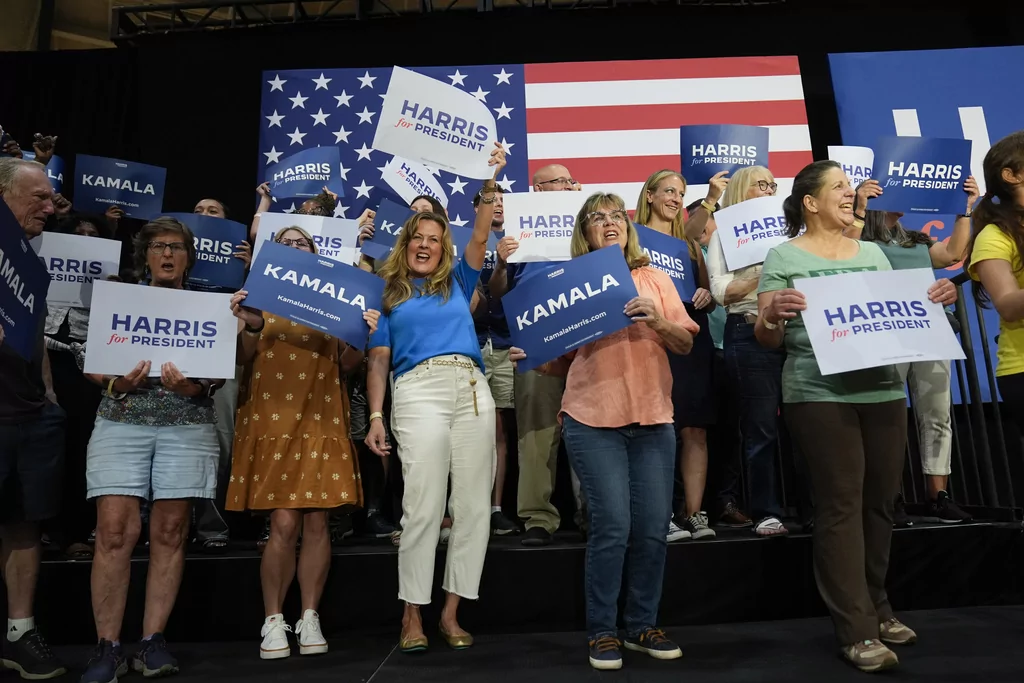

The 2024 election was once thought to rest almost entirely on the Rust Belt states of Pennsylvania, Wisconsin, and Michigan, and while Vice President Kamala Harris‘s ascension has altered the dynamics, both parties still desperately want to win the Midwestern swing states.
Harris and her new running mate, Gov. Tim Walz (D-MN), will sweep into Pennsylvania and Wisconsin this week as they look to keep those blue-collar, “blue wall” states in the blue corner this fall. But whereas President Joe Biden was able to regale crowds with his “Scranton Joe” upbringing and his residence in nearby Delaware, Harris is a California figure who was raised by parents who both held graduate degrees.
To plug that gap, Harris has tapped Walz, who hails from Minnesota, as a regional appeal to Midwestern voters who may find him more relatable. But many Republicans, and some Democrats, thought Harris may have made things harder on herself by skipping over Gov. Josh Shapiro (D-PA), who was widely viewed as a more centrist choice.
“Let me be clear — I’m horribly disappointed,” former Pennsylvania Democratic Party Chairman T.J. Rooney told the Washington Examiner. “I believe [Harris] missed an opportunity to better connect with important voters outside of suburbia by passing Josh over.”
Rooney said Harris has held fast to her progressive base by choosing Walz, who brings an affable personality and a background as a teacher and football coach but is being painted by conservatives as a radical choice who supports hard-left policies.
Meghan McCain, a conservative commentator who is deeply critical of Trump, described Walz as “a Trojan horse with a red state accent.”
Pennsylvania, Wisconsin, and Michigan delivered Donald Trump the presidency by flipping his way in 2016 and then went for Biden four years later. Since then, both parties have been working hard to woo voters in those states this election cycle.
Harris’s path to the White House runs through Pennsylvania in particular. According to 270toWin’s “consensus” Electoral College map, Harris has three winning combinations to the necessary 270 electoral votes and the presidency, all of them requiring the Keystone State.
Harris’s campaign has renounced her past comments that she would end fracking, a stance that could have hurt her in western Pennsylvania, but Walz brings fresh concerns after he signed a bill last year committing Minnesota to 100% green energy by 2040.
Political correspondent Steve Kornacki shared his doubts about Walz on X.
“The results of Walz’s ’22 GOV race in MN don’t suggest he provides an obvious boost with the blue collar voters Dems have been shedding in WI/MI/PA,” he wrote.
However, Amy Koch, a Minnesota Republican strategist, said she actually thinks Walz can play in neighboring states.
“We have what’s called the Iron Range here in northern Minnesota,” she said. “It’s incredibly similar to Pennsylvania, West Virginia. It is heavily union. It has been trending Republican in a very big way. And yet, still, Walz has appealed there. So, yes, in a region like that, he’s a natural fit.”
In this way, Walz is similar to Sen. J.D. Vance (R-OH), the Republican vice presidential nominee, who hails from the Midwest but not from a swing state and is seen as making a kind of regional appeal to nearby voters.
Walz, like Vance, also has a military background and has attacked his vice presidential counterpart by calling him “weird,” a term that has caught on with the rest of the Democratic Party.
Nonetheless, Walz and Harris may have their work cut out for them as they seek to appeal to rank-and-file Teamsters truck drivers, auto workers, and steel mill laborers who have swung away from the Democrats since 2016.
Dan Bowling, who teaches labor law courses at Georgia State University, says winning blue-collar voters may be a tall task for a Harris-led Democratic ticket, even with her new running mate in tow.
“Whatever his supposed weaknesses were, Scranton Joe was still Scranton Joe,” Bowling said. “I think union voters in those states might still have been inclined to pull the lever for Biden. Harris is a very different candidate. She’s a lawyer from California. She’ll have to find a new vernacular to speak with blue-collar voters.”
CLICK HERE TO READ MORE FROM THE WASHINGTON EXAMINER
Whether Walz can help fill that gap remains to be seen.
“He says all of the right things when it comes to unions, as a Minnesota governor should, but I don’t think the rust belt states will flock to the Democratic ticket because of Walz,” Bowling said.






